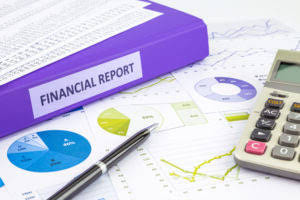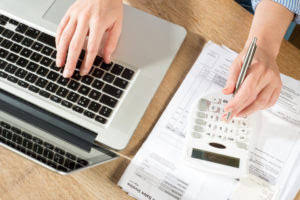Content
Therefore, a strong balance sheet is built on the efficient management of these major asset types, and a strong portfolio is built on knowing how to read and analyze financial statements. Fixed assets, such as property, plant, and equipment (PP&E) are the physical assets that a company owns and are typically the largest component of total assets. Although the term fixed assets is typically considered a company’s PP&E, the assets are also referred to as non-current assets, meaning they’re long-term assets. Current assets are assets that can turn into cash within one year of the balance sheet date. They are listed in order of relative liquidity, in other words how easily they could be converted into cash. A balance sheet is an accounting report that provides a summary of a company’s financial health for a specified period. Also known as a statement of financial position, the summary reports the company’s assets, liabilities, and equity in one page.
For all loans, like mortgages, you’ll want to calculate using what’s left on your loan and not your starting balance. The value of the asset accounts is totaled and stated on Line 5. A high percentage return implies well-managed assets and here again, the ROA ratio is best employed as a comparative analysis of a company’s own historical performance. Divide net income by the total assets or average total assets to obtain the ROA. In many ROA formulas, total assets or the ending period total assets figure is used in the denominator.

The general ledge will indicate the current value of long-term assets. In a balance sheet, the total sum of assets must equal the sum of liabilities and owner’s equity. Comparing debt to owner or shareholders’ equity is a common way of analyzing leverage on the balance sheet. When liabilities or debt is high, a conservative investor may be alarmed.
Introduction: How To Make A Balance Sheet
Meanwhile, if your net worth is consistently going in the opposite direction, that may be a signal that something is wrong. Check your net worth annually to make sure that things are moving in the right direction.
- The balance sheet is a snapshot of a company’s financial position at a particular time.
- As discussed earlier, assuming that we are looking at a balance sheet before any payment of dividends, the equity account will include the current year’s net income.
- Accessing balance sheet and income statement software is a surefire way to save you time, stress, and money — as you make the right decisions towards letting your business be the best that it can be.
- After which, we will compute for the total current assets, the total non-current assets, and the total assets.
“It was great in explaining it. It would be great if you added one example on how to prepare a balance sheet for us.” Add the “Total Liabilities” and “Total Owner’s Equity” figures. Title the sum “Total Liabilities and Owner’s Equity.” The balance sheet has been correctly prepared if “Total Assets” and “Total Liabilities and Owner’s Equity” are equal. Retained earnings are the amount of profit a company has earned for a particular time period. The fund cannot guarantee that it will preserve the value of your investment at $1 per share. An investment in the fund is not insured or guaranteed by the FDIC or any other government agency.
What Goes On A Balance Sheet
The money market funds offered by Brex Cash are independently managed and are not affiliated with Brex Treasury. Yield is variable, fluctuates and is inclusive of reduced expense fees, as determined solely by the fund manager. See program disclosures and the applicable fund prospectus before investing for details and other information on the fund. Contact us for a copy of the fund prospectus and recent performance data.

Spend less time crunching the numbers and more time on the things that matter. QuickBooks tracks and organizes all of your business’s accounting data, making it easy to access your balance sheet and other financial statements. A balance sheet captures the net worth of a business at any given time. It shows the balance between the company’s assets against the sum of its liabilities and shareholders’ equity — what it owns versus what it owes. Any accounts receivable balances you may have would be placed under the current header as would any inventory you have in stock. Add these totals to arrive at your total current assets amount.
Where To Find Balance Sheet Templates
Assets are divided into current or short-term assets, and non-current or long-term assets. Download our basic balance sheet template xls to get a snapshot of your company’s financials using Excel. For example, liabilities include accounts payable, How to Make a Balance Sheet interest payable, wages and salary payable, and customer deposits. Just like assets, you’ll classify them as current liabilities and non-current liabilities . These are also known as short-term liabilities and long-term liabilities.
He notes that oftentimes business owners just guess at profitability, without really calculating the carrying costs of many assets. Enter “Assets” as a heading on the left side of the page or spreadsheet. Current assets are cash and assets that will be converted to cash within a year.
- Businesses use balance sheets to make important financial decisions.
- Securities in your account protected up to $500,000 (including $250,000 claims for cash).
- As such, we will have to break down the account more granularly to make the current year’s net income appear clearer.
- Using data from your balance sheet, you can calculate liquidity and leverage ratios.
- This total must equal total assets because the business must not own more than it owes.
A balance sheet is not affected by adjusting journal entries or closing entries, nor does your balance sheet directly affect your net income and your cash flow statement. We’ll do one month of your bookkeeping and prepare a set of financial statements for you to keep. Allowance for Bad Debts – Amount of estimated debt to the business that is not expected to be repaid and is subtracted from accounts receivable on the balance sheet. It is used by lenders to evaluate a company’s ability to weather hard times. Often, loan agreements specify a level of working capital that the borrower must maintain. The current ratio, quick ratio and working capital are all measures of a company’s liquidity.
What Are Assets On A Balance Sheet?
Examine the concepts of assets, liabilities, and net worth in a way that will help you relate them to your business. Learn how to create a balance sheet for your company and how to use it to analyze your business’s liquidity and leverage. In the process of generating those sales I will have some expenses like fuel, oil, meals, etc. Let’s assume that I have $1,000 worth of expenses half of which I paid with cash, and the other half I paid with a credit card. Data from your balance sheet can also be combined with data from other financial statements for an even more in-depth understanding of your practice finances.
The balance sheet focuses on the assets, liabilities, and equity for one specific day of the year. Here, make a list of all the equity accounts like common stock, treasury stock, and the retained earnings number from Step 1.
Current assets are considered anything that can be converted into cash quickly. Applicant Tracking Choosing the best applicant tracking system is crucial to having a smooth recruitment process that saves you time and money. Find out what you need to look for in an applicant tracking system.
Equity
It will guide you through a step-by-step process to create a balance sheet for your company and explain how to use a balance sheet to analyze your business’ liquidity and leverage. To fill out a balance sheet you must enter in all of your current assets and liabilities along with owner’ equity onto a balance sheet template. Compare the current reporting period with previous ones using a percent change analysis. Calculating financial ratios and trends can help you identify potential financial problems that may not be obvious. The last line, line 9, totals the number of liabilities and equity. This is the total amount the firm owes plus the owners’ investment in the firm. The total of the liabilities and equity must equal total assets as the firm can’t own more than it owes.
Having several articles on the making around NWC I totally understand where your comment is coming from and I think this is a very good remark. You are right to point out that a widespread definition of NWC found online includes cash. It seems that, at least in countries like the US, that definition is used as a measure of a company’s liquidity. Interestingly in other countries , this is not the case and the default definition of NWC does NOT include cash. Obviously, this can get quite cumbersome, as it requires a correct match of all NWC accounts linked to EBITDA items. As discussed earlier, assuming that we are looking at a balance sheet before any payment of dividends, the equity account will include the current year’s net income.
Print the reports you need, or save them as a PDF to send to your accountant. Save time and track your finances in one place—let QuickBooks accounting software do the hard work for you. The balance sheet details what a business owns , what it owes , and its worth (shareholder or owner’s equity) at a specific point in time, such as the start date or end date of a fiscal year. In the simplest terms, the balance sheet subtracts what you owe from what you own to calculate your business’s net worth.
This is quite a forensic exercise that will essentially require you to look over every line account used in your accounting software. Once analyzed, a discussion with the financial controller, or CFO, can then take place to question any discrepancies of opinion over the correct classification of items. To download the example cash flow statement used throughout this post, click here. The QuickBooks Online mobile and QuickBooks Self-Employed mobile companion apps work with iPhone, iPad, and Android phones and tablets. Not all features are available on the mobile apps and mobile browser. QuickBooks Online mobile access is included with your QuickBooks Online subscription at no additional cost. Data access is subject to cellular/internet provider network availability and occasional downtime due to system and server maintenance and events beyond your control.
New business owners should not wait until the end of 12 months or the end of an operating cycle to complete a balance sheet. Savvy business owners see a balance sheet as an important decision-making tool. WHAT TO EXPECTThis Business Builder will introduce you to accounting terminology and examine the concepts of assets, liabilities and net worth in a way that will help you relate them to your business.
Send at the real exchange rate, and spend with a Wise debit card. It is important to run a Trial Balance on a regular basis so if the report doesn’t balance https://www.bookstime.com/ you can identify and correct the problem as soon as possible. Desktop users will see our list of transactions and the Trial Balance below, side-by-side.
Shareholders’ Equity
Easily save this report to your computer or print it at any time. While having a template can speed the process considerably, you’ll still have to calculate the number and run the risk of error. Best Of We’ve tested, evaluated and curated the best software solutions for your specific business needs. Long-Term Liabilities – Debts of a company due after a period of 12 months or longer. GAAP – Abbreviation of Generally Accepted Accounting Principles. Conventions, rules, and procedures that define accepted accounting practice.
